Flies
{{start}}
{{end}}
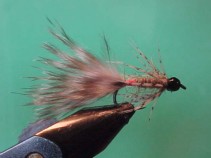
{{+1}}TBH hot butt caddis bugger{{-1}}
{{start}}
If your fishing in water with reasonably numbers of caddis your going to want to give this 3 cm bugger a swim. Caddis represent up to 70% of a trout's diet and whilst this fly is bigger than any caddis nymph I have seen trout love it. It is also a must tie on fly for discoloured water. You can fish it as a nymph but my preference is to fish it across, down and on the swing.{{end}}
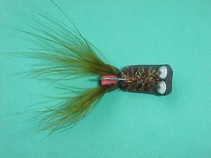
{{+1}}Wiggle frog – Chatto’s original{{-1}}
{{start}}
You can fish this fly on an intermediate or faster sinking line but my preference is to fish it on a floating line so that it swims just below the surface. On a floating line the best technique for fishing the fly is to give it one or two short strips and then rest it for a moment whilst it comes back to the surface. Rest it there for a few more seconds and then repeat the process.{{end}}

{{+1}}Yabby /crayfish{{-1}}
{{start}}
This is my latest addition to the genre and it's more of a polaroiding fly than a stripping fly. I like to use it to ambush sighted fish by casting well in front of patrolling fish and generally a little closer to shore and then let the fly sink and lie doggo.{{end}}

{{+1}}Zug bug – Chatto’s version{{-1}}
{{start}}
This fly has stood the test of time being designed in the 1930's as a cased caddis imitation in the Catskills by Cliff Zug. It continues to be relevant today on any water where caddis are on the menu. It is equally at home in rivers and lakes. It's no surprise that the body is peacock herl a material that has made flies like the diawl back and prince nymph amongst the top fish taking flies.{{end}}

{{+1}}Zug bug jig – Chatto’s version{{-1}}
{{start}}
This fly has stood the test of time being designed in the 1930?s as a cased caddis imitation in the Catskills by Cliff Zug. This jig version is particularly good for running water as the shape of the jig hook causes the leader to partially invert the fly mitigating snags as the fly bounces along the bottom.{{end}}
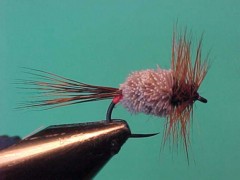
{{+1}}Rat faced McDougal{{-1}}
{{start}}
This appears to be an American fly designed by Harry and Elsie Darby (or Darbee), the famous fly tiers of Roscoe, New York. The story goes that a friend of theirs, and several names have been put forward including Percy Jennings, an amateur fly tier from Cold Spring Harbour and Carl Otto von Kienbush a well known New York angle asked them to design a highly visible and buoyant dry fly.{{end}}

{{+1}}BMS 2{{-1}}
{{start}}
The BMS is a favourite fly at Lake Bullen Merri where it gets its name BM Special. Because of its history of success it is often regarded as a quintessential Rainbow trout fly by many Victorian fly fishers. This variant is tied with round tinsel which doubles up as a dubbing loop. In smaller sizes it has also proven itself as a great attractor fly for brown trout.{{end}}
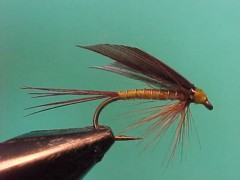
{{+1}}Greenwells glory (wet){{-1}}
{{start}}
This "must have" pattern was first tied by James Wright in 1854 for Cannon William Greenwell as a river wet fly. Over time it has been translated into a nymph and of course into a dry fly which is a must have fly when olives are around. The tie below is a modern version of the original wet.{{end}}
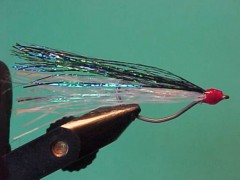
{{+1}}Bendback{{-1}}
{{start}}
The bendback is very effective fly in locations that contain a lot of structural hazards such as oyster racks, mangroves, tree stumps and rock bars. The design of the fly reduces the propensity of the fly to snag. Choose the colours of your materials so that your version mimics local bait fish.{{end}}

{{+1}}Silver surfer – silver straggle fritz bugger{{-1}}
{{start}}
I was ripping the black tailed version of this fly through the chop with some success when my boat partner asked what fly is that 'silver surfer'. I explained to him that it was just a woolly bugger variant tied with a black tail and silver UV straggle fritz. I tried to give it a real name such as 'silver woolly bugger' but unfortunately 'silver surfer has stuck.{{end}}













